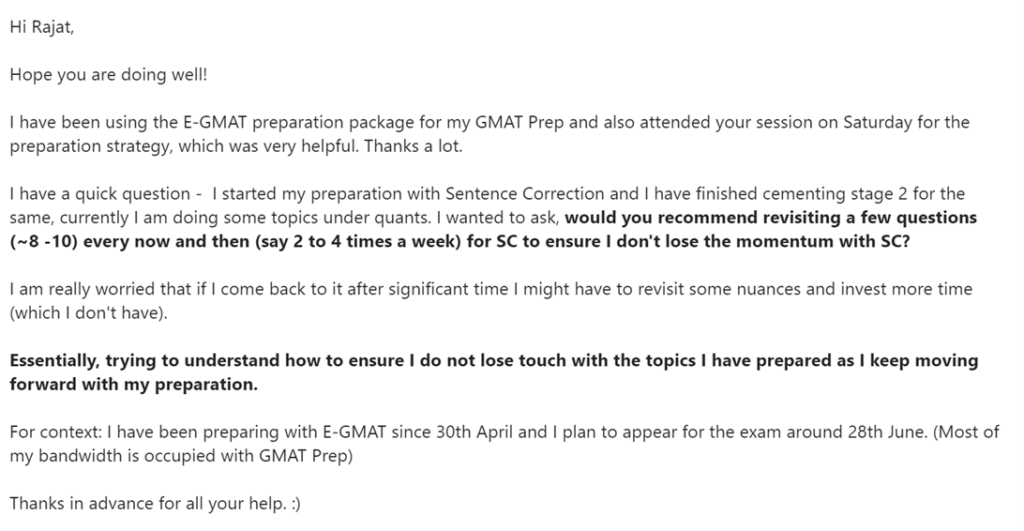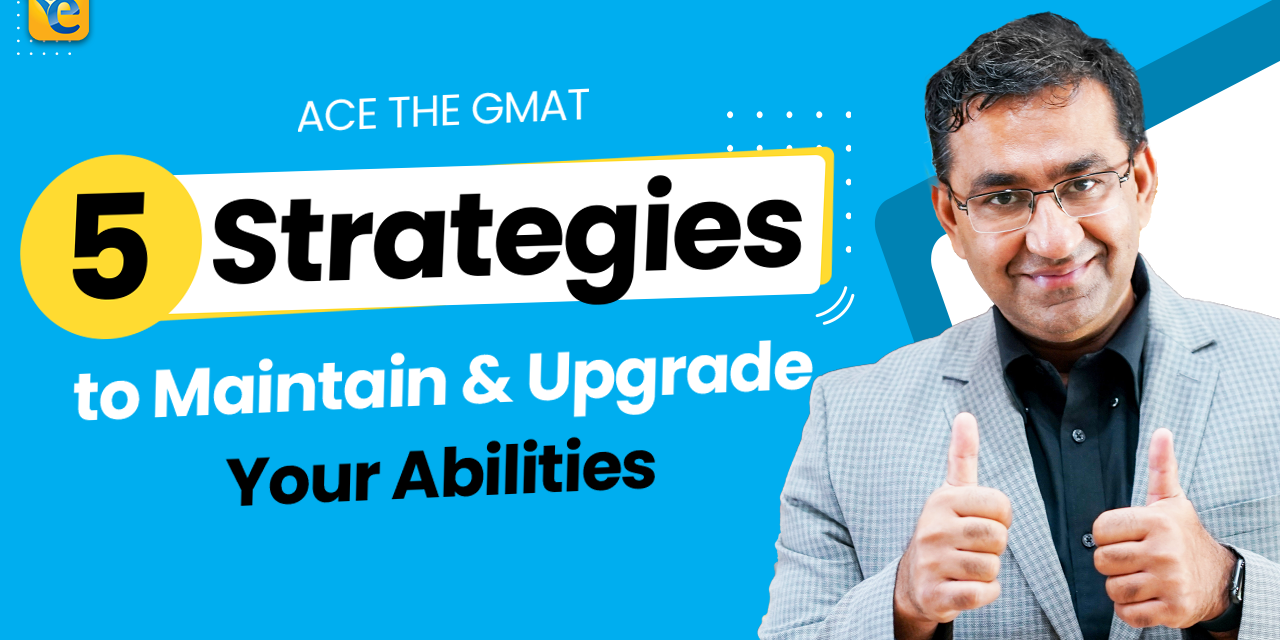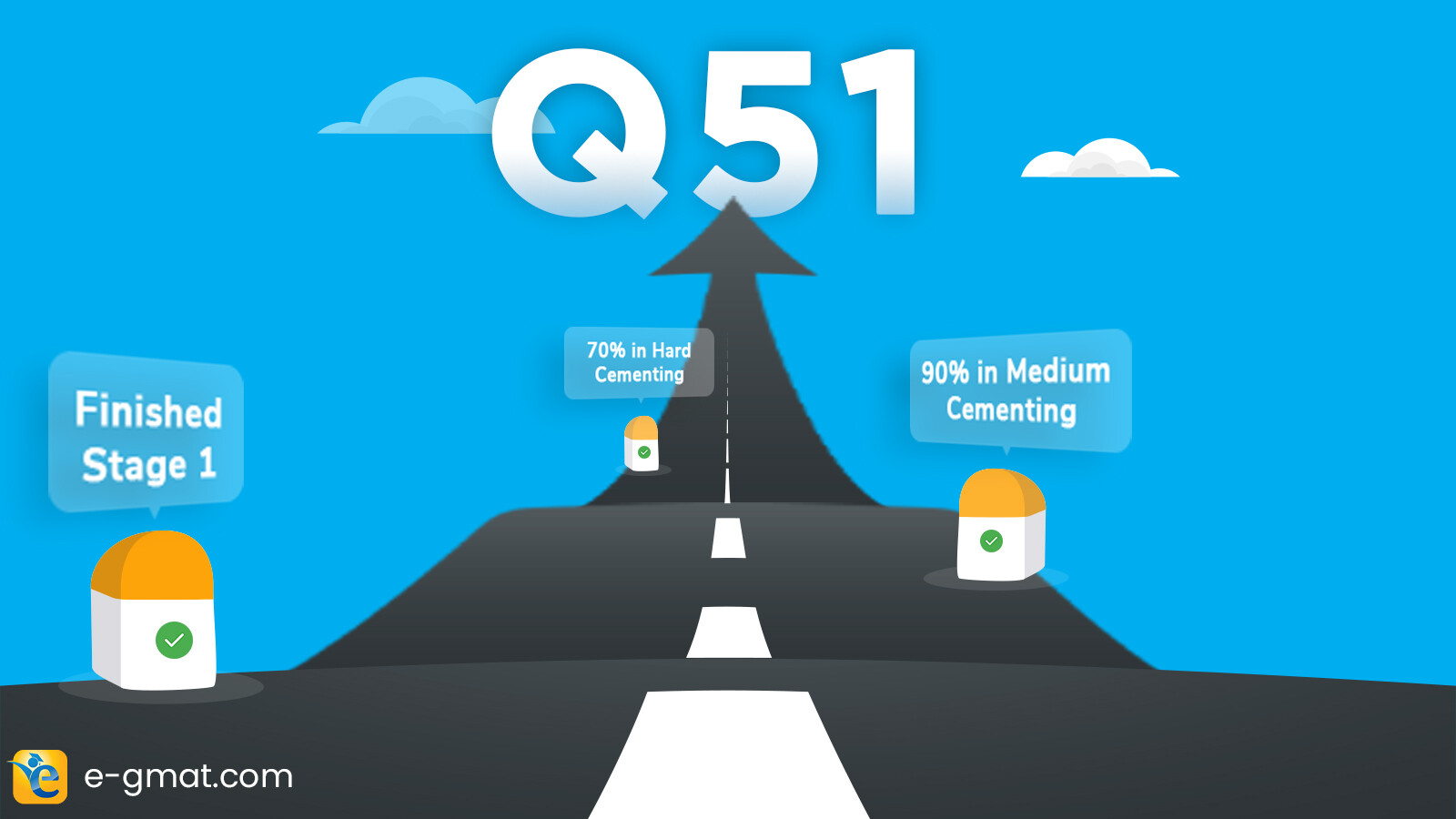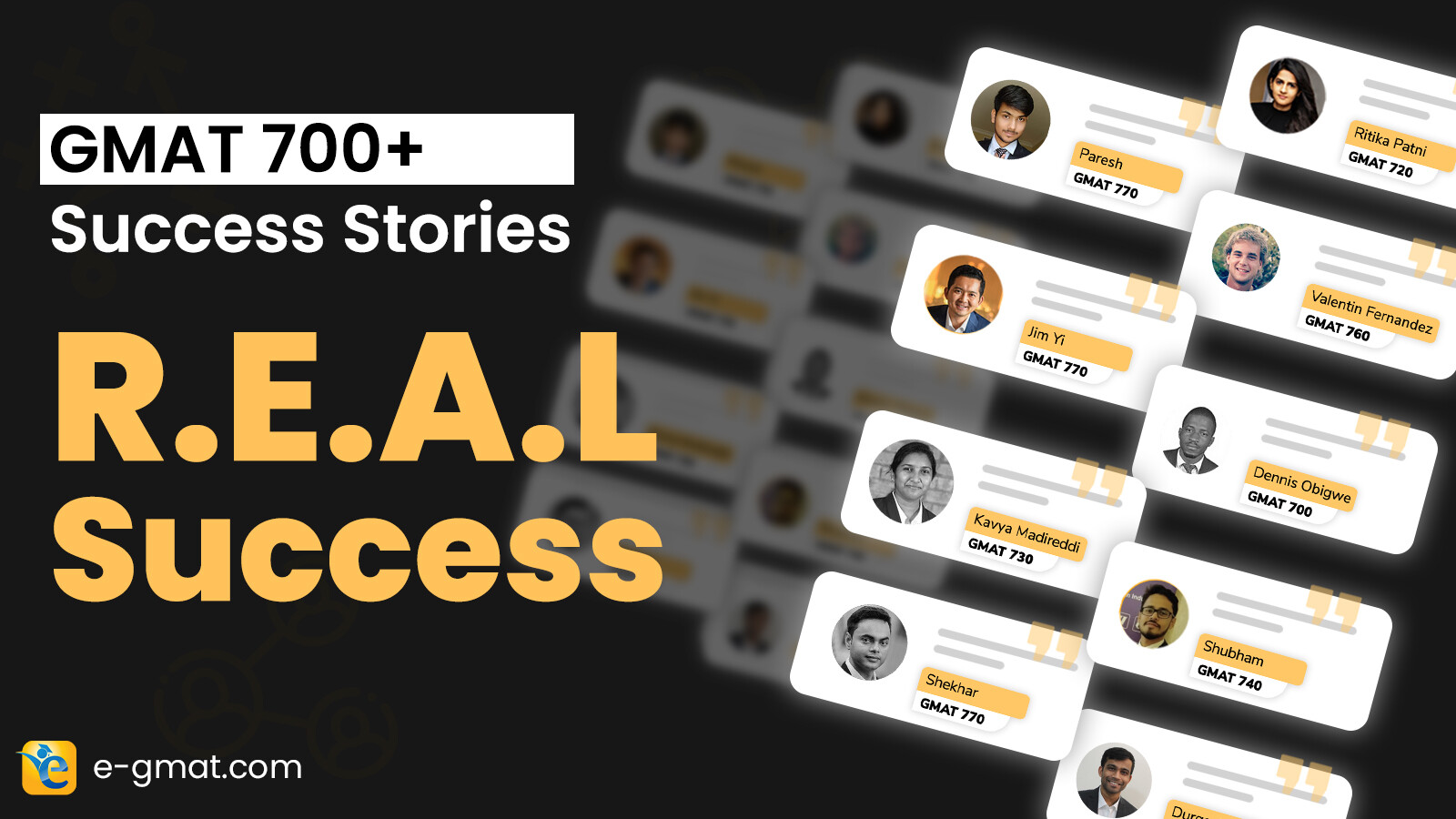When studying for the Graduate Management Admission Test (GMAT), one of the most frequently asked questions by students is, “How do I maintain my ability during the preparation?” This question underlines the challenge of sustaining the momentum as you transition from one section of the GMAT to another, an essential factor in successful test preparation. This article aims to outline key strategies to help you maintain, and even enhance, your ability throughout your GMAT preparation journey.
Here is an example email from a diligent student.
Email query from a student

The Groundwork for Success
Successful GMAT preparation often begins with understanding the correct process of learning. Let’s consider an instance of a student who embarked on their GMAT preparation using the eGmat platform on the 20th of April. They diligently completed the course and successfully finished ‘cementing’, an essential step in reinforcing their understanding of the test’s structure and question types.
By doing so, the student was able to achieve a significant percentile, indicating a high ability level. This suggests that one of the fundamental ways to ensure a solid foundation for GMAT preparation is to thoroughly complete the course and ensure that the learned concepts are firmly cemented in your mind. These steps provide a good starting point, setting you on a path to achieve higher ability levels.
The Challenge: Maintaining Momentum
An important challenge emerges once you are done with a Subsection —how to maintain the momentum as you transition from one subsection of the GMAT to another. For instance, you might be moving from Sentence Correction (SC) to Critical Reasoning (CR) or Word Problems. During this transition, you need to ensure that your understanding and ability in SC don’t wane while you’re focusing on CR or Word Problems.
This is where the dual goals of improving the application of your knowledge and avoiding pitfalls come into play

.
Strategies to Maintain Ability in GMAT Preparation
As you embark on the next stage (go from one subsection to the other) of your GMAT preparation journey, it’s crucial to set two primary goals to maintain momentum and enhance your proficiency.
Goal 1: Get better at applying concepts:
How can you improve the application of concepts? The key is to make the application a second nature. Strategies outlined below will help you with this.
Goal 2: Revise Pitfalls
Regardless of how well-prepared you are, there will always be certain concepts or question types that pose more of a challenge than others. These ‘pitfalls’ are areas where you’re most likely to make mistakes. Identifying and revising these areas of weakness is essential to ensure a steady improvement in your GMAT preparation.
Strategies for Improvement: Application of Concepts
The application of learned concepts is key to succeeding in GMAT. It requires making a connection between the theoretical knowledge you’ve gained and how to use that knowledge in solving actual GMAT questions. Here are some strategic steps to help you become more adept at applying concepts:
- Conscious Reading:
- While going through complex sentences, consciously make an effort to understand all aspects of their meaning.
- Engage with high-quality reading materials from sources like The New York Times, Wall Street Journal, or The Economist.
- Make it a habit to analyze sentence structures and how meanings are communicated.
- Regular Practice:
- Set aside time each week to solve three to five GMAT questions.
- Focus on questions that offer detailed solutions and encourage application-based learning.
- Use high-quality, official GMAT questions or those from trusted GMAT preparation platforms like eGMAT.
| Steps | Action | Expected Outcome |
| Conscious Reading | Actively dissect and understand complex sentences. Regularly read from quality sources. | Improved comprehension and analysis skills |
| Regular Practice | Solve 3-5 GMAT questions each week from trusted sources. | Enhanced ability to apply learned concepts to solve problems |
- Solution Review:
- Review solutions to questions you’ve solved, paying attention to both correct and incorrect answers.
- Don’t just focus on the correctness of the answer; try to understand the reasoning behind selecting or rejecting each option.
- Timing:
- As you apply concepts and improve, monitor your timing. With consistent practice, your ability to solve problems within the allotted time should improve, moving you closer to that desirable sub-one-minute timeframe for most questions.
Applying these strategies will help you get better at applying concepts learned during your GMAT preparation. Remember, your goal should not just be about understanding the theoretical concepts, but also about applying this understanding to solve actual GMAT questions swiftly and accurately.
Do you also want a 700+ on the GMAT? Try out our Free Trial today and get access to 10+ hours of free interactive video lessons, 400+ GMAT-like questions, and AI-drive tools that help you track your progress. We are the most reviewed GMAT Preparation company on the GMAT Club, with 2500+ reviews!
Strategies for Improvement: Revising Pitfalls
In GMAT preparation, one crucial aspect of maintaining your ability is identifying and revising the areas where you struggle or make common mistakes – the pitfalls. Here is a comprehensive guide that outlines how you can effectively revise your pitfalls:

- Bookmark Questions:
- Use the feature of bookmarking challenging questions on your preparation platform. Bookmark questions you initially got wrong or found difficult to understand.
- Regularly revisit these bookmarked questions. The repetition will help you to understand the concepts better and prevent you from making the same mistakes.
- Notes Review:
- Maintain a notebook or use the note-taking feature on your e-GMAT platform. Keep a record of the mistakes you’ve made, the concepts you struggle with, and the areas you need to revise.
- Regularly go through these notes. This habit will ensure that you are consistently revising your weak areas.
| Steps | Action | Expected Outcome |
| Bookmark Questions | Bookmark difficult questions on your platform. Regularly revisit these questions. | Reduced chances of repeating the same mistakes |
| Notes Review | Keep a record of common mistakes and areas of struggle. Regularly revise these notes. | Enhanced grasp of problematic concepts |
- Search for Constructs:
- If certain sentence structures or grammatical constructs confuse you, use Google’s Advanced Search to find real-world examples of these constructs in quality sources like New York Times or The Economist.
- This practice will help you understand the correct usage of these confusing constructs and clarify your doubts.
- Engage in Active Learning:
- When reviewing solutions and notes, don’t just passively read them. Engage with the material. Ask yourself why a particular answer is right or wrong. This practice will improve your understanding and help you avoid similar pitfalls in the future.
Following these strategies will help you become more proficient in revising your pitfalls during GMAT preparation. Remember, identifying and understanding your pitfalls is just as important as learning new concepts. It will help you to be better prepared and more confident when tackling GMAT questions.
At e-GMAT, we strive to make the students’ life easier at every level and therefore, we have built this fantastic tool called the GMAT Personalized Study Planner. With this tool, you can not only find out the Quant and Verbal Sectional scores but also Sub-sectional scores in Quant (Algebra, Arithmetic, etc.) and Verbal (CR, RC, and SC) to achieve your target GMAT Score! Moreover, this tool will craft your very own study plan in 5 minutes. Register for our FREE Trial and create your personalized study plan in 5 mins!
Conclusion – Strategies to Maintain GMAT Ability
As the old saying goes, “A journey of a thousand miles begins with a single step.” The path to GMAT success may seem daunting, but remember, every bit of effort counts. Keep your goals clear, focus on enhancing your ability to apply the learned concepts, and constantly revise your pitfalls. With these strategies in mind, you’ll maintain your momentum and continually improve as you journey towards your GMAT test day. Remember, success isn’t just about reaching the destination; it’s about the knowledge gained and the abilities honed throughout the journey. Best of luck in your GMAT preparation!













